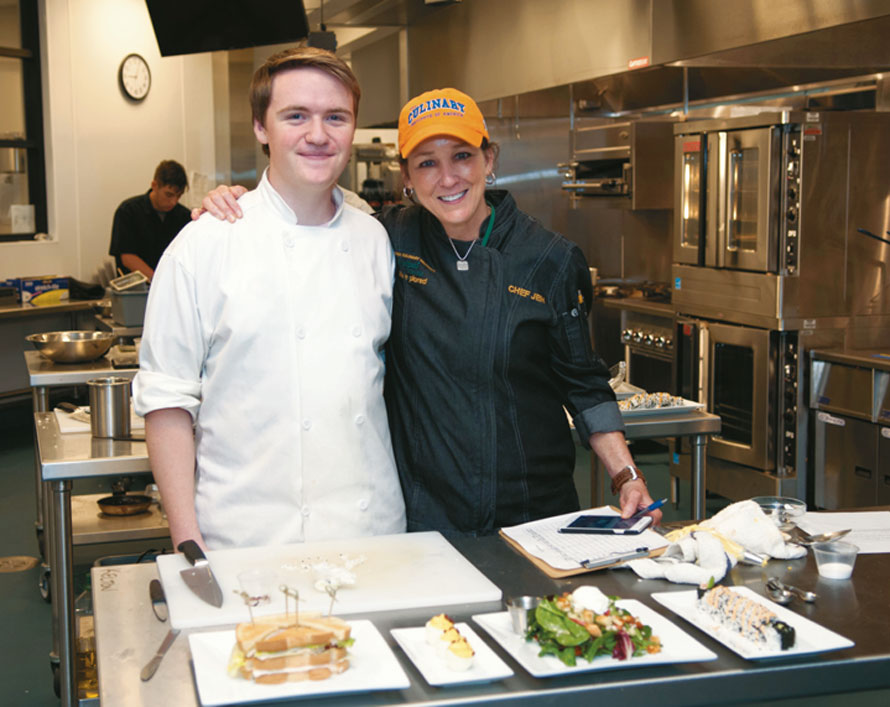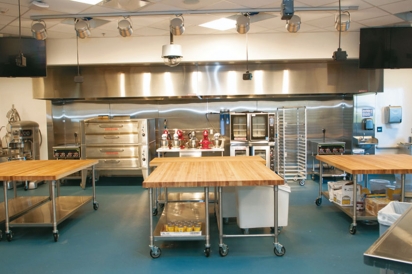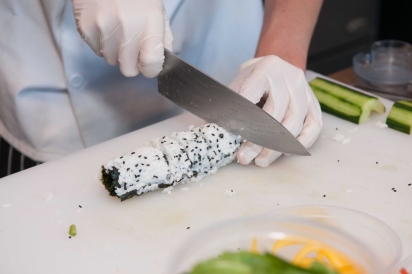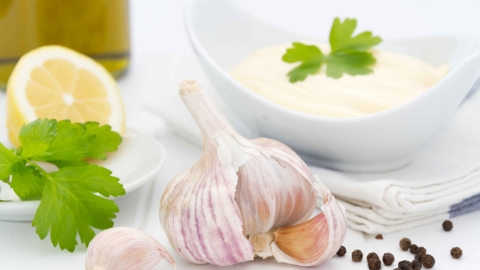Chef Jennifer Jackson: Inspiring Culinary Excellence at Yavapai College
What attributes do great chefs and great teachers have in common? High energy, inspiration and passion are three that come to mind.
Chef Jennifer Jackson, the lead culinary instructor at Yavapai College Culinary Institute of Sedona, has these gifts in abundance. An award-winning chef and accomplished culinary instructor, cooking is her second career. Her first was a business partnership engaged in buying and selling imported steel products for manufacturers of farm equipment, tanks, autos and bridges. That entailed mostly office work.
“It was a lifestyle change I wanted. I graduated from the Oregon Culinary Institute, and in 2003 owned one of the first food trucks in Portland,” she says. It was called ‘Delta Blues Gumbo,’ reflecting my Louisiana roots.”
After moving to Phoenix, she began teaching cooking classes at Sur La Table and working at St. Mary’s Food Bank Alliance’s Community Kitchen program for adults with barriers to employment. Jackson says “I taught a 16-week cooking class to people from shelters, prisons and the homeless. The success rate for job placement was 98%, and the program continues to be very successful.”
Another move brought her to Sedona, where she opened Natura Spice Cooking Studio. Her popular evening dinner classes featured a full menu with a theme, such as Tuscan specialties, or Asian flavors. She was getting warmer, but the routine of teaching classes as entertainment was not fulfilling.
Inspiring Students
Today she says she has found her life’s true passion: teaching young people at Yavapai College. After two years at a facility in Camp Verde High School, Jen and the culinary program students have moved to a gleaming, state-of-the art professional kitchen at the Yavapai Community College Sedona Center in West Sedona.
“I want to make a difference in kids’ lives,” says Chef Jen, as her students call her. “I want to inspire my students to love cooking.”
She guides her students to appreciate authentic, wholesome foods with strict adherence to nutritionally dense foods and healthy cooking techniques. “There are no processed foods, very little fried food, but lots of vegetables. They learn to make sushi, Asian vegetable rolls, Mediterranean dishes, and to think of the colors of the rainbow on a plate, using colorful vegetables, less meat, more fish.”
The 16 students enrolled in the program come from different high schools in the region, as well as from different backgrounds and inclinations. “Some of them are braniacs, some are skateboarders, some have tattoos; 75% of them are already working in the food service industry, helping support their families,” Jackson says.
On a recent visit, the students are preparing sushi rolls.
What inspired them to take up the culinary program?
“I wanted to take this program so I can eventually have my own restaurant. And I wanted my best friend to come along, so now we are in it together.”
Another young man echoed this goal: “I really like this class because I want to be a chef and have my own restaurant.”
One student says that he is employed in a Sedona restaurant where the chef is also teaching him, so he has the benefit of two mentors.
A young woman says she plans to seek a degree in hospitality, “so this program is a good introduction to that.”
Another says “This is a great opportunity to take the class in high school—it’s a fantastic facility and Chef Jen is an amazing teacher.”
“I love the food. We are so lucky to learn how to make really good food.”
Several of the students say they really just want to learn to cook well: “It is a good skill to have.”
Trying Something New
To start the students off with enthusiasm, Jackson plans classes around foods they are likely to be familiar with and enjoy. “They learn to prepare a corned beef sandwich from scratch, from the bread to the mayo, the brined beef to the sauerkraut. They learn to make hot dogs, buns and mustard. We don’t buy any condiments here.”
Does she have trouble introducing less-familiar foods? “A big challenge for their palates was lamb,” Jackson replies. “Another was risotto. But I describe that as Italian macaroni and cheese—a comfort food—and then they warm to the idea of it. One student told me that risotto is one of his favorite new dishes ‘The risotto was really good—once we tasted it.’”
Jackson says she challenges her students to prepare different kinds of foods and encourages culinary creativity. She wants them to develop a sense of autonomy in their work. “There are no mistakes here, just learning experiences. I reward them for taking a risk and meeting a challenge by giving them verbal recognition in class, and maybe something for their knife kit— a spatula or chopsticks.”
In addition to the practical part of the curriculum, the students have a textbook, online assignments, quizzes, tests, midterms and finals. “They need to know ratios in their head— bakers’ percentages, conversions, metric versus standard, weighing versus volume. They need to know everything about using eggs: from mayonnaise to poached eggs, for example.”
Since Jackson is a certified Serve-Safe Instructor she can teach the health and safety procedures required by Arizona’s County Health Departments and certify the students directly. This level of qualification is a real employment bonus for students who can earn up to $2 more per hour by already having their food safety certificate.
Challenging Herself and Her Students
Last year, Chef Jackson became one of fewer than 20 people yearly to earn a Level II Chef Rating from the Culinary Institute of America. To get this advanced professional rating, chefs must qualify and apply to take the test. “It is a grueling, four-day process with two written exams per day followed by five-hour practical cooking sessions,” says Jackson.
The tests demand high-level demonstrations of culinary skills including yeast baking, pastry, cakes, charcuterie, pâtés, terrines, garde-manger, Mediterranean cuisines, hors d’oeuvres and a full array of healthy cooking techniques including sautéing, braising, roasting and steaming. The success rate for passing the test is only 70%. Yavapai College’s Executive Dean James Perey is proud of Jackson’s achievement, and no doubt her level of accomplishment inspires her students as well.
Clearly her students are motivated; attendance is an important part of their grade, and Jackson says she has had a 100 % attendance rate.
“Some of these kids have to get rides from a long way away and will show up here in the dark and cold before class starts at 7am.
“Kids are motivated by the creative work of the kitchen and by their relationship with their instructors. They appreciate the team effort here. One of them, told me ‘I consider each one of these kids to be my homies,’” she says.
Thirty years ago it was not uncommon for some to rise to the title of chef by making their way up the kitchen ladder. Starting out as dishwashers, they peeled potatoes, washed lettuce and rotated provisions while observing cooking procedures and the knife and sauce skills of trained staff. If they liked the work, had drive and developed good skills, they could become caterers, bakers and restaurateurs.
Asked if this is still a viable route, Jackson says, “I feel strongly about education and training. I have known many dishwashers that have moved up the ladder to become great chefs, but I feel each one of them would tell a prospective student or individual wanting to pursue a culinary career to go to school.”
In the U.S. today, the work of a chef is considered a profession rather than a trade, as it once was. Chef Jackson agrees, “With the amount of time and money, we all spend on our education it should be considered a profession. More and more people are creating careers for themselves.”
Whichever route a would-be chef takes, according to Jackson, the most important factor in inspiring a young person to pursue the profession might be the mentoring relationship of chef to student.
“During the time I have with each student in class I definitely consider myself their mentor. It is up to them to reach out to me once they have graduated to continue using me as their mentor. I would continue to mentor them as long as they reached out,” she says.
“Some of these kids will progress far in the industry. Some will use their skills to make their way through school to other careers. Whatever they choose to do, their experience in the kitchen will be valuable.”
The culinary program is filled to capacity each session. In the next school session, there will be a new café for the students to work in. Featuring fresh juice drinks, smoothies, school-made baked goods and snacks, it will be open during school hours. It will be the students’ own retail kitchen to work in, where they can develop their skills in managing and serving the food they create.
For the future, Jackson is working with Northern Arizona University to develop a culinary associate’s degree to piggyback onto the hospitality and restaurant management degrees.
We can all look forward to the creative and healthy foods these graduates will bring to our tables and our communities. Thank you, Chef Jen, for making the future brighter for your students and for all of us who enjoy good food. Raise a glass to culinary excellence!
Community College Culinary Programs
Interested in learning more about food or cooking for a living? A variety of culinary programs are offered at Maricopa County and Yavapai County Community Colleges.
Maricopa County: https//Maricopa.edu A Certificate of Completion of Culinary studies (CCL) is available at Estrella Mountain Community College and Mesa Community College.
Associate in Applied Science degrees (AAS) in Culinary Arts are available through two-year academic programs at Scottsdale Community College and Mesa Community College.
AAS degrees in Sustainable Food Systems are offered through Rio Salado Community College and Mesa Community College. In addition to culinary instruction in cooking and baking, food safety and sanitation, these programs offer food and agriculture studies, water use, organic gardening and alternative approaches for more sustainable food production, waste and waste disposal. Global food cultures and alternative approaches to food production are studied.
Yavapai County: http://www.yc.edu
Certificates in Culinary Arts Fundamentals for high school students are offered through: Prescott Community College Campus: For high school students in dual enrollment with vocational training, with the financial assistance of Joint Technical Education District. (JTED).
Chino Valley High School: For students in concurrent vocational enrollment (JTED).
Sedona Campus: A program for both high school students and adults, with the financial assistance of Valley Academy for Career and Technical Education (VACTE). Future proposal for an association with NAU School of Hospitality for transfer credits.










